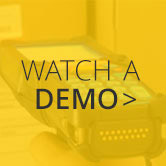You need the correct tools to take a systematic approach to goods procurement and sales fulfillment when running a business. Any slowed down deliveries could potentially reflect badly on you, after all. That is where SAP Business One (B1) can enhance the processes to give you an edge. There are dozens of features in SAP B1 that are useful, but the ones that shine are those for vendor and inventory management, procurement, and automation.
What is Inventory Management?
First off, let’s talk about what inventory management is and why you need it for your business. Inventory management is necessary for three reasons:
- You want to reduce the overall cost of maintaining your inventory. This includes the stock, software, warehouse condition, and staffing.
- You want to reduce inventory so you don’t have to undersell or overbuy and miss out on a profit.
- You want to increase the amount of money you get. When you have an item, it limits the chances of a shopper going elsewhere. Plus, consistently having an item in stock when someone needs it increases your business reputation. That gets you more customers and more money.
Purchasing Management Features of SAP Business One
Managing the procurement process from start to finish is easy with SAP Business One. The system can be used alone, but you can also integrate it with other programs to sync data and documents to one location.
Here are some other purchasing management features to consider:
Data Management
Information on every vendor, client, and item in your warehouse is maintained by SAP Business One. You can find automatically generated reports that analyze stock, purchases, and account balances. The user-friendly interface displays price lists, customer details, tax information and much more. You can even sync SAP B1 to all devices with an internet connection.
Accounts Payable
With customer data synced from other programs, you can process payments, shipping, handling, and cancellations all in one place.
Accounting and Warehouse Integration
The streamlined integration of other inventory and financial management programs means that you can see the level of stock, plan out purchases, and automate invoice and receipt creation from within SAP Business One.
Reporting
Whether you’re on a mobile device or the computer dashboard, you can see real-time reported information about every facet of purchases and inventory.
Pick & Pack
One of the key features of SAP Business One is called Pick and Pack, where you can organize and automate the A/R reserve invoices and sales orders. Every piece of documentation can be neatly created and filed away. Pick and Pack includes the following key functions:
- Constructing a picklist for open orders or A/R reserve invoices
- Creating invoice and delivery documents
- Picking items on a pick list
- Packing up items for shipping
Inventory Management Features
Keep tabs on the processes of your business with the inventory management features included in SAP Business One. Information from every department in your organization is synced by the system, so you can see details on orders and items and other transactions at multiple locations.
Other features include:
Goods Receipt and Issue Control
Track and record the location of stock, inventory amounts, transfers, and more. You can drop-ship and perform consignments within SAP Business One as well. Inventory and cycle counts can be done automatically with the program, especially when it is integrated into other inventory management software.
Warehouse and Inventory Management
Receive multiple reports and models on the dashboard about spending and revenue. Change prices, perform item master data maintenance, and more.
Bin Location Management
Link multiple warehouse locations, utilize Pick and Pack functions, and set allocation rules.
Item Master Record
Efficiently manage items that are purchased, produced, sold, and stored in inventory. You can define services provided as items when desired. For every item you sell or service you render, you can input the correct data in SAP Business One. The system will then use that data for reporting on production, sales, accounting, and warehouse management.
Head to the Inventory > Item Master Data screen to see all the information recorded about a single item. The names, settings, and whether it is sold or purchased, and if the management status can be viewed.
You can also customize the following:
- Default business partner catalog numbers
- Serial and batch numbers
- Alternative items
Within the Item Master Record, you can even click the tabs on the screen to see the useful Sales Data and Purchasing Data of your selected item.
Price Listing
Having trouble managing prices? In SAP Business One, you can create separate price lists, so you have more flexibility when offering various prices or packages to your customers. When sales and purchasing documents are created, the system will calculate the prices based on that list and the payment terms. You can modify the price lists whenever you need, and SAP Business One will also sync with eCommerce platforms to make price listing even easier.
Tips For Purchasing and Inventory Control in SAP B1
Now that you know about some of the functions in SAP Business One that allow for smoother purchasing and inventory control, let’s discuss some of the ways you can apply said features to your benefit.
Businesses that don’t utilize SAP B1 often have to create purchase orders manually. A purchase order includes the requested quantities and set prices of the listed products. These documents are then matched with packing slips and invoices that haven’t been paid yet.
SAP Business One automates every step. The purchase order is linked to the goods receipt or production order, and that is then linked to the A/P invoice. In other words, every single step is automated, so you never have to enter the same data twice or experience mistakes.
Purchasing documents also build from others. Using the Copy To function, you can copy the information in one document to the next. The original becomes the Base Document, and the new version is called the Target Document. Another function called Copy From allows you to alter business partner information, choose multiple base documents, and to customize the rows of information and exchange rate.
At any time during an open order, SAP Business One will analyze how much you have in stock and note any instances where orders exceed the amount of available inventory. Procurement documents can then be created with a few quick steps and sent to a vendor with a request for purchase. To accelerate delivery, you can also make purchase orders from a sales document.
Conclusion
Purchasing and inventory control can be made easier once you become more comfortable with using SAP Business One. And at Wisys, we have made that process simple and smooth. We also have Agility, an affordable option for warehouse management software that integrates into SAP Business One and will increase your productivity.
Give Wisys a call today to learn more about how we can make your SAP Business One integration seamless.


